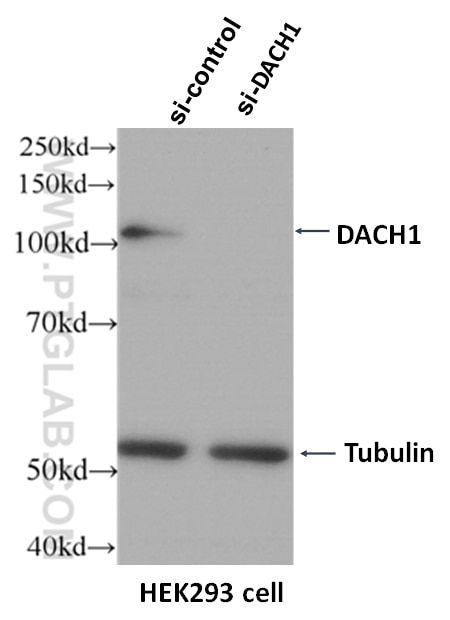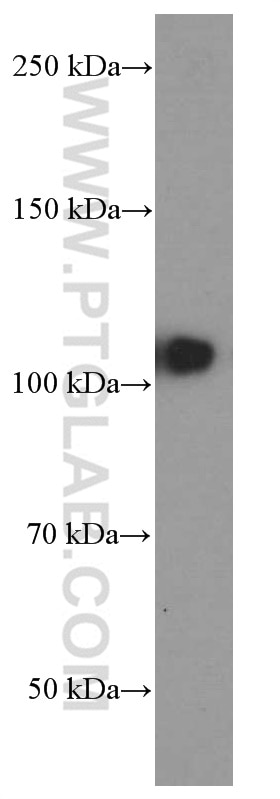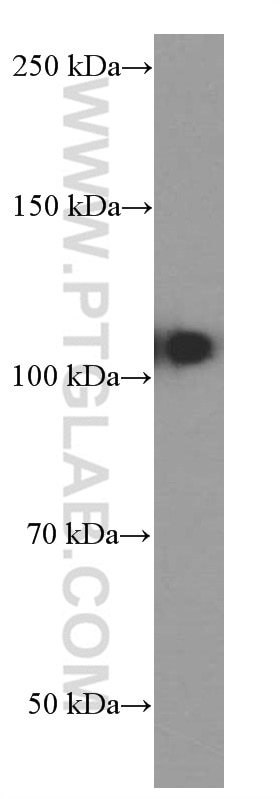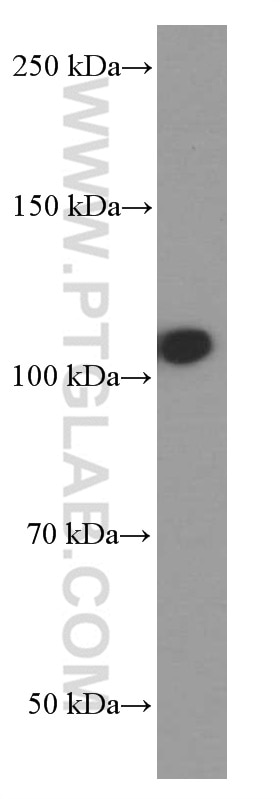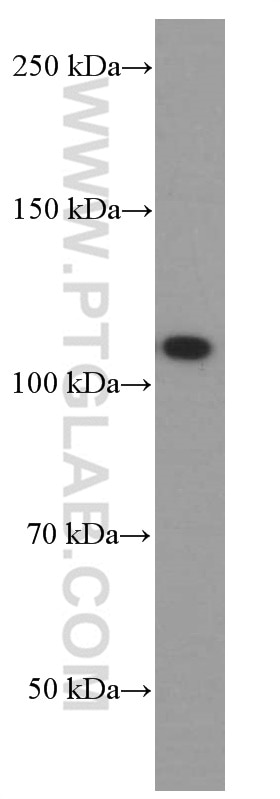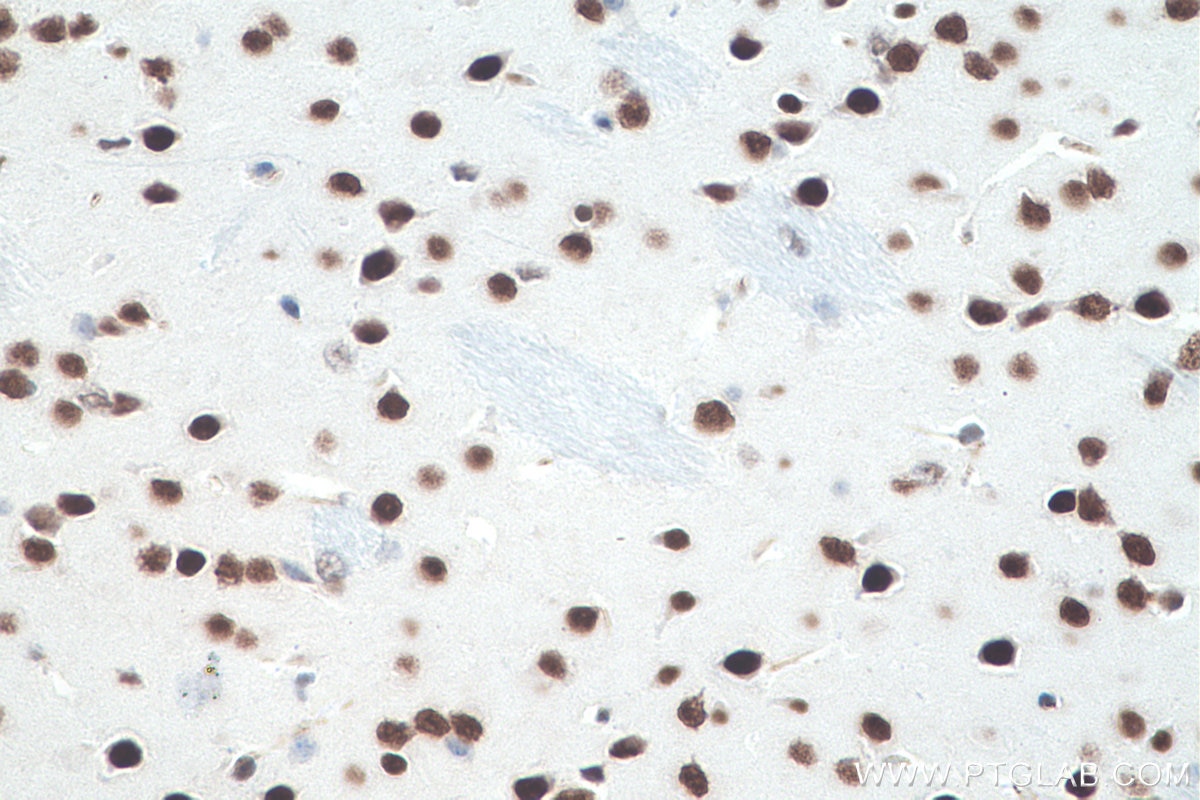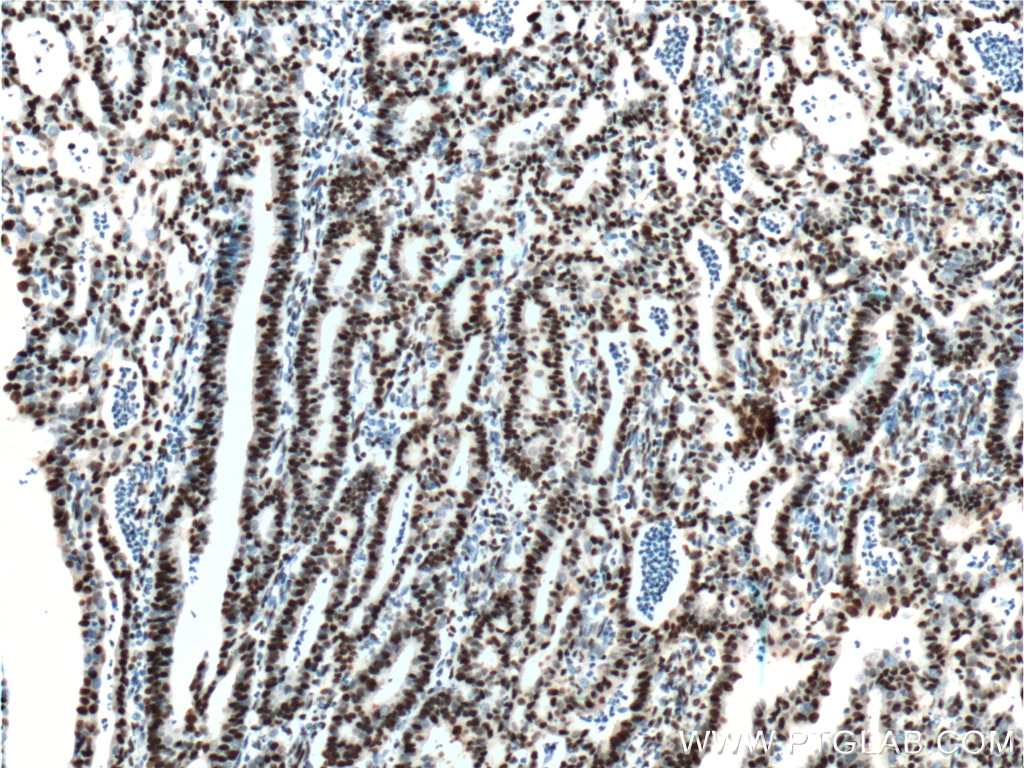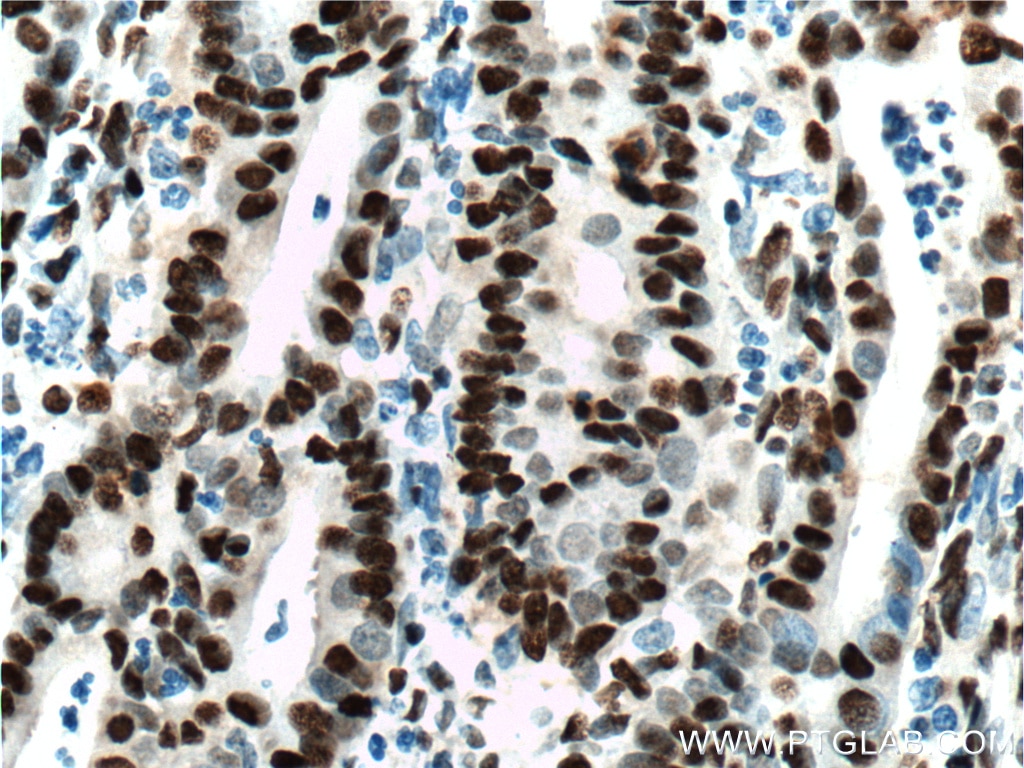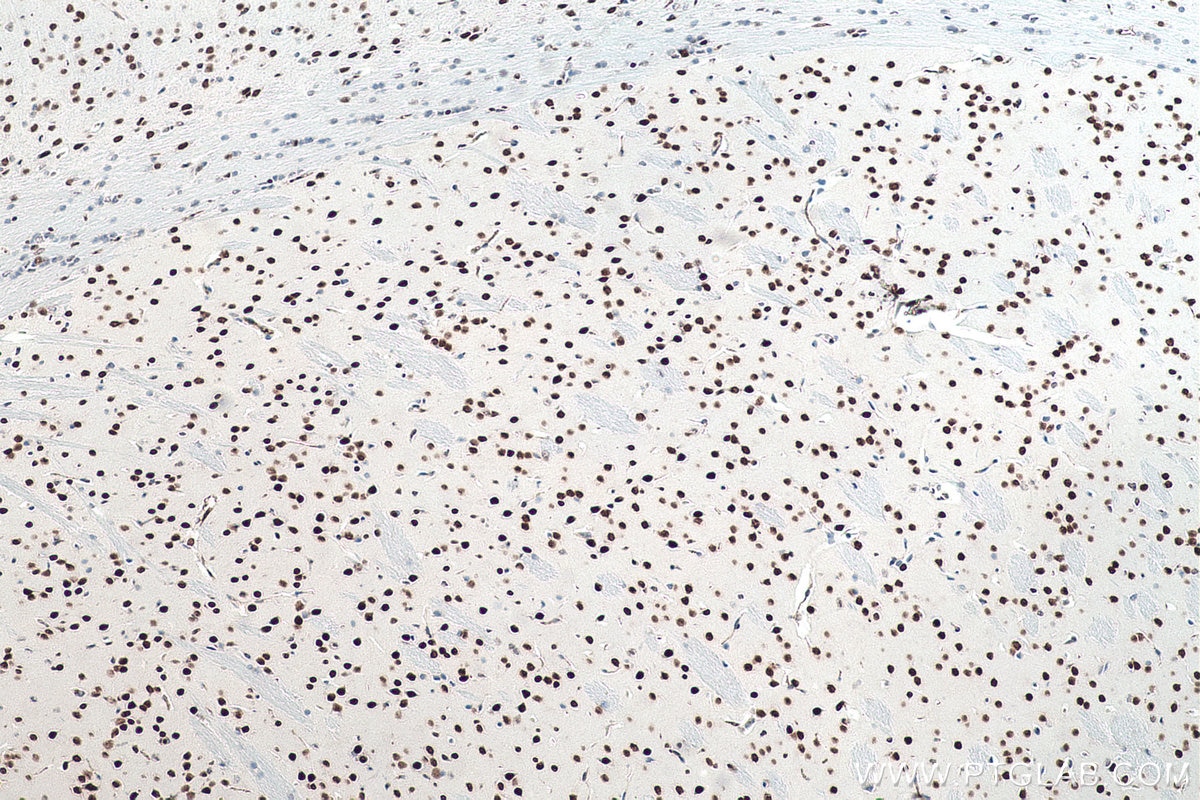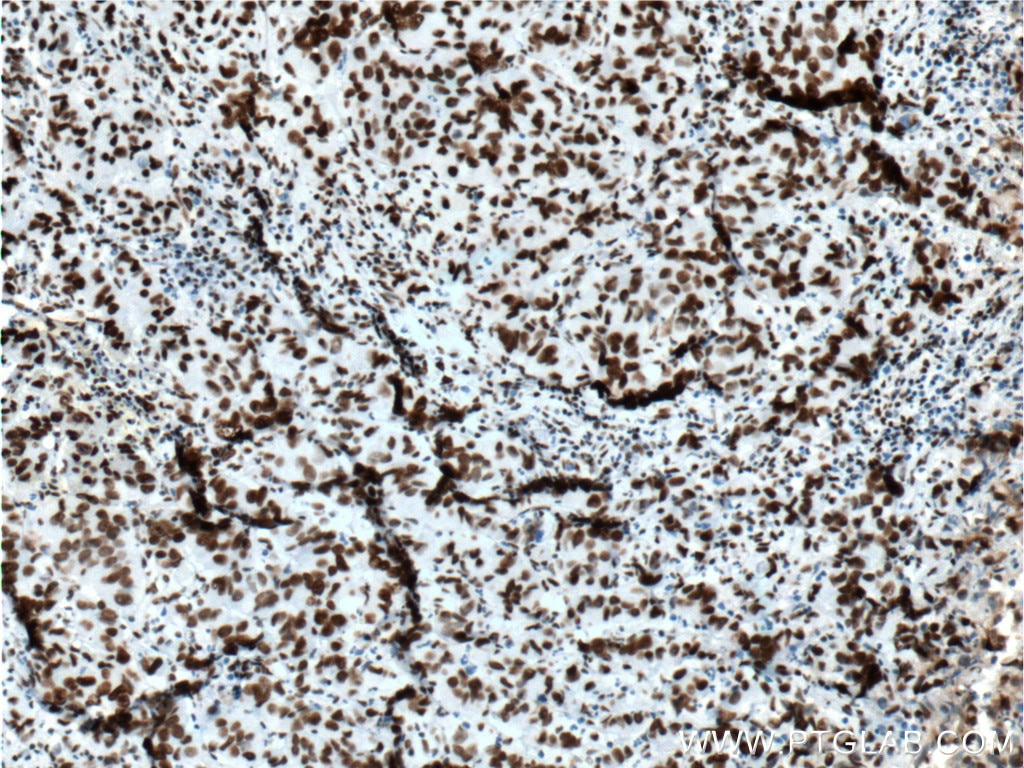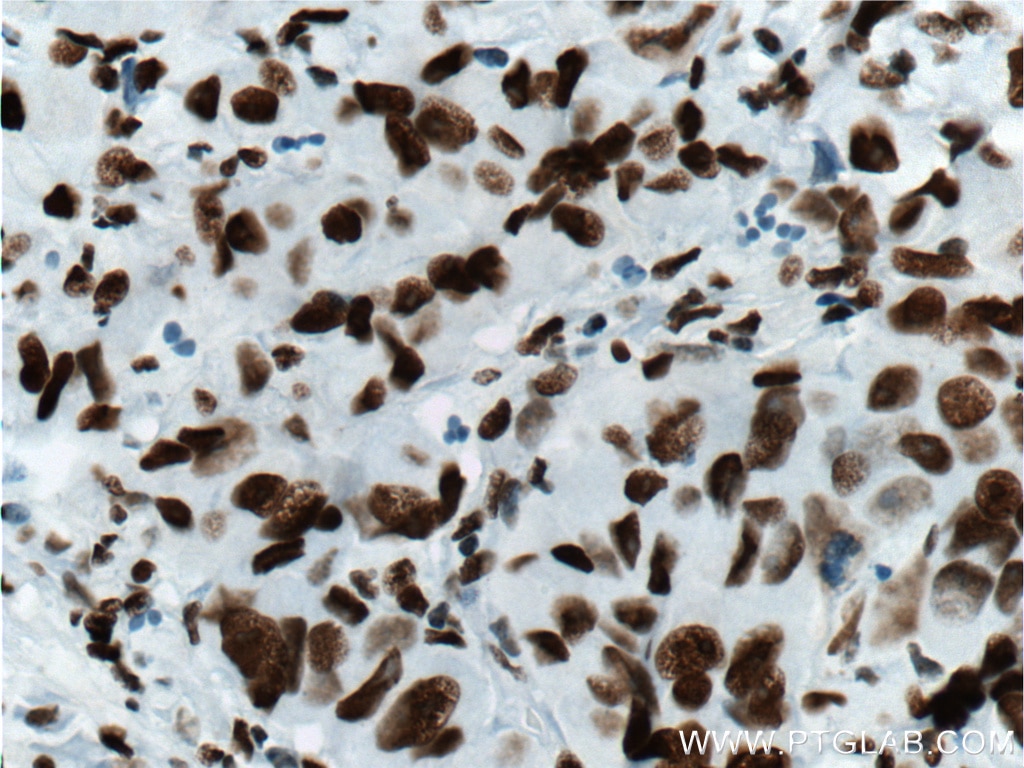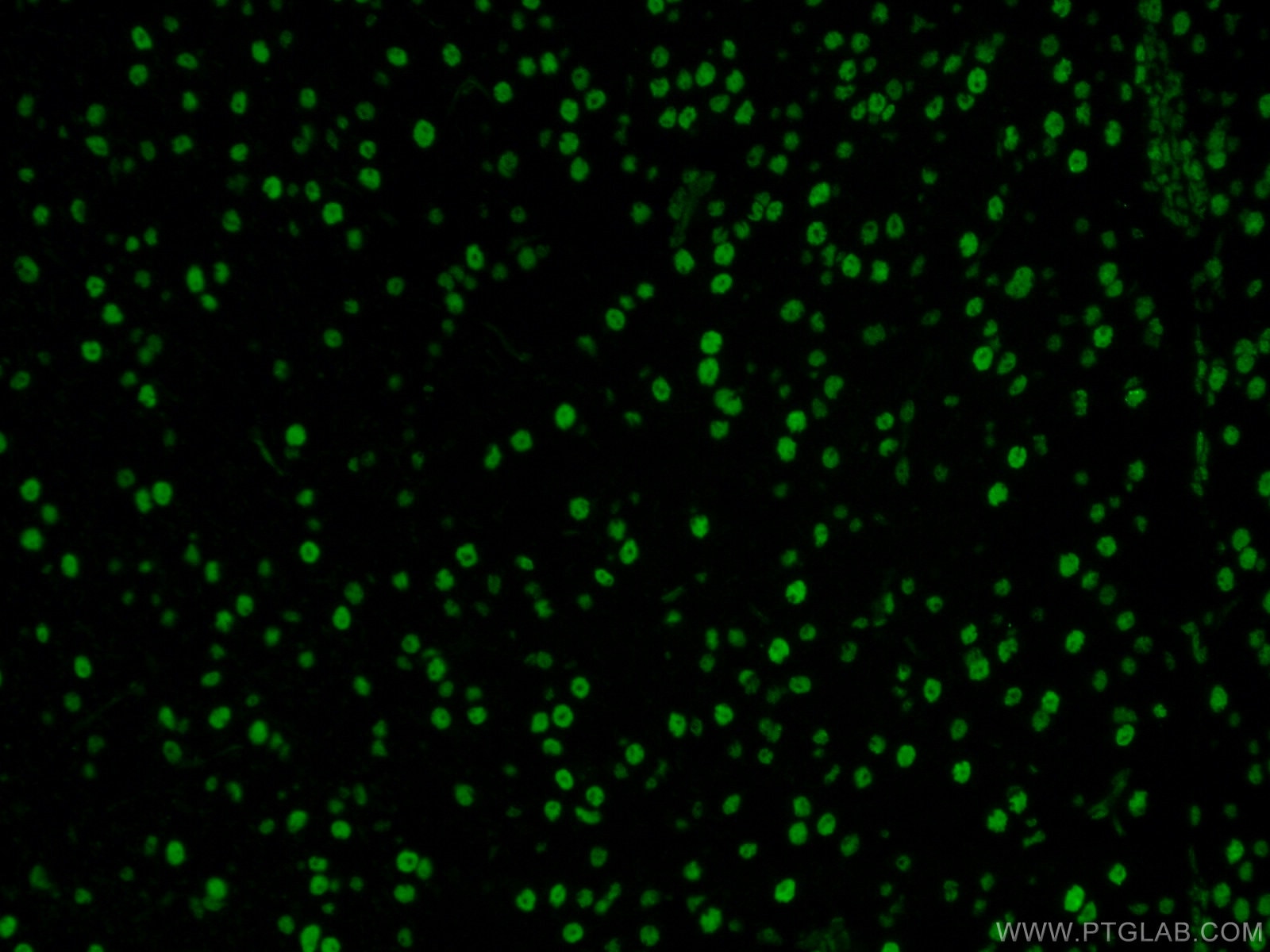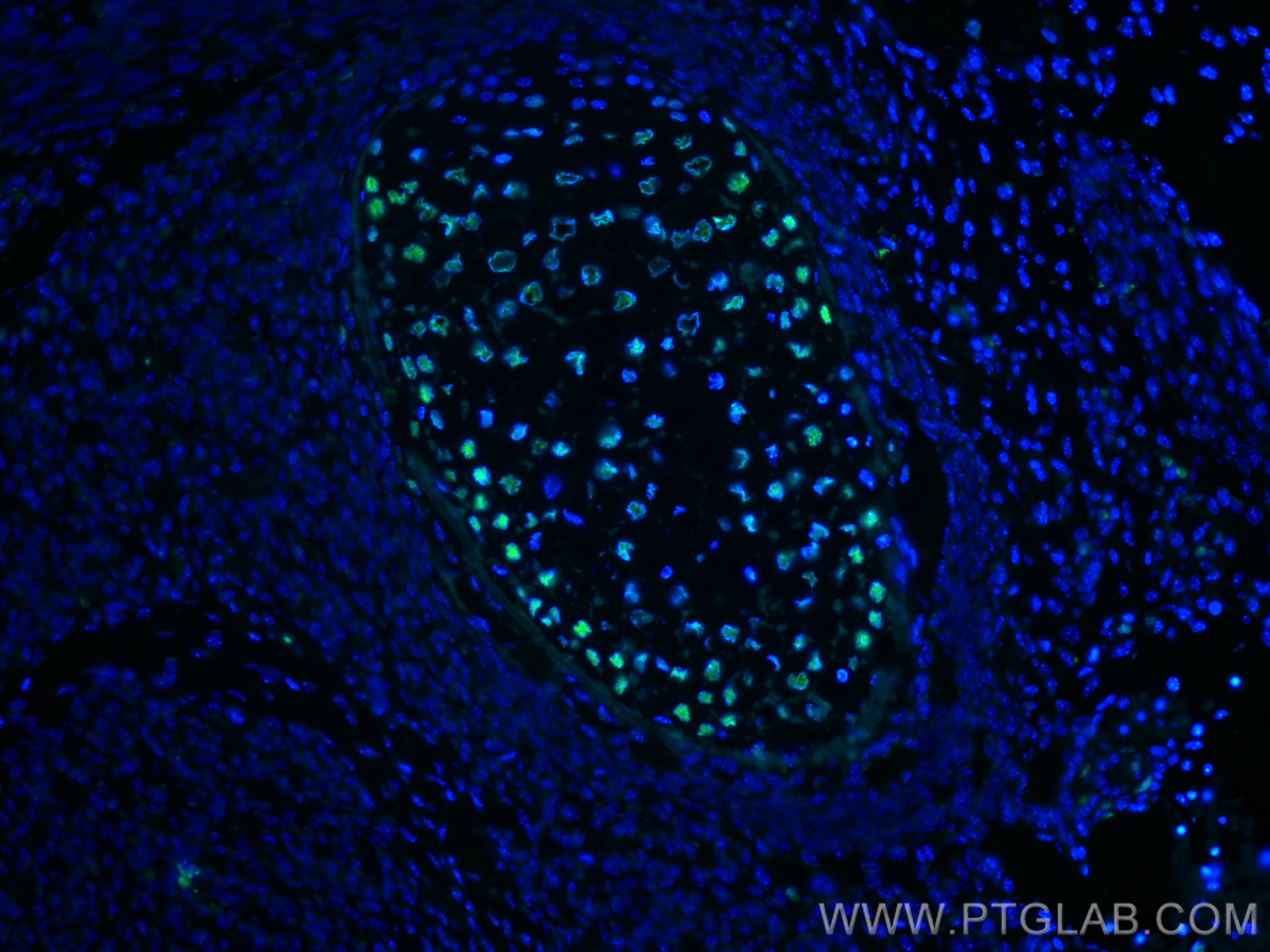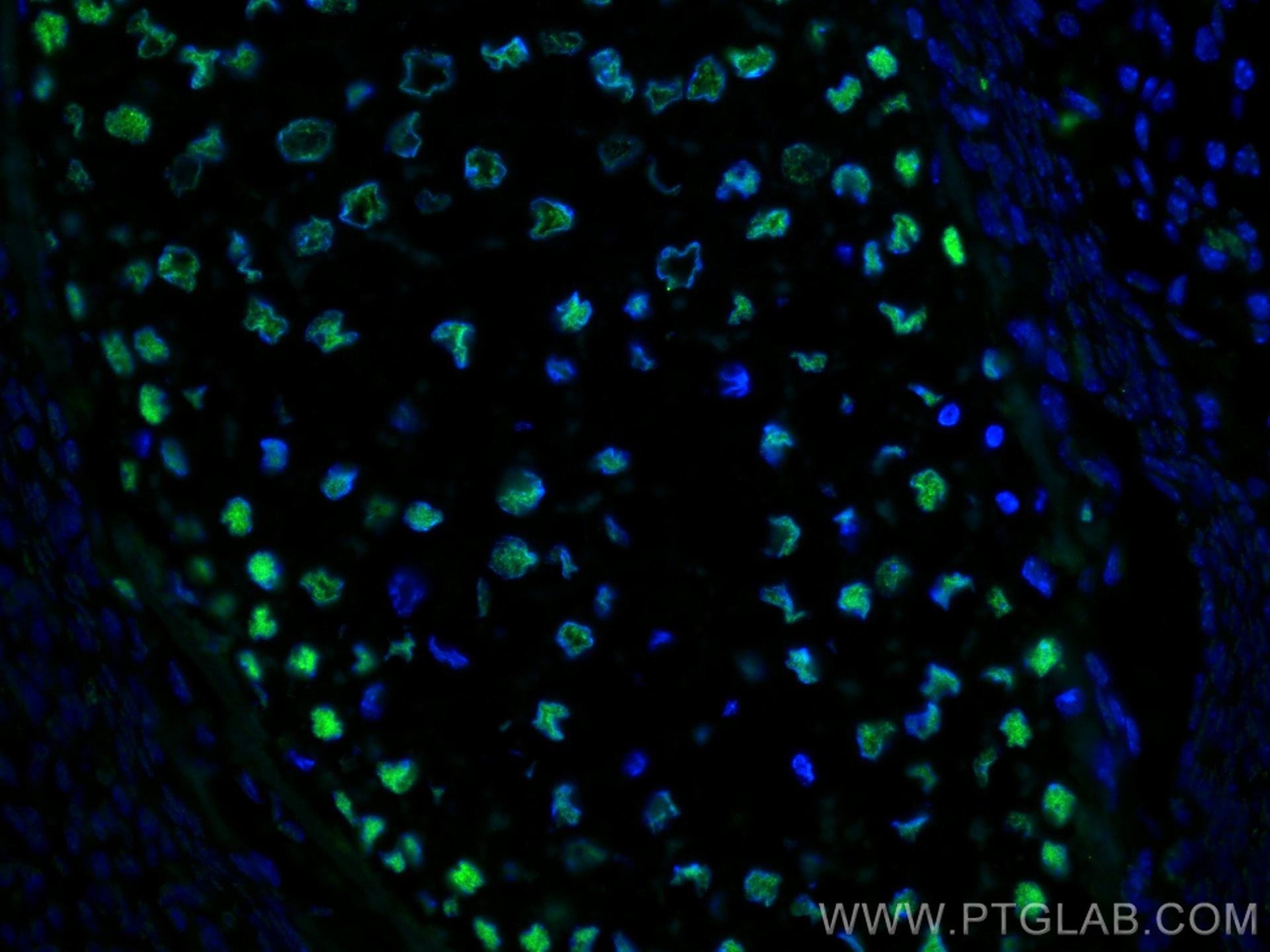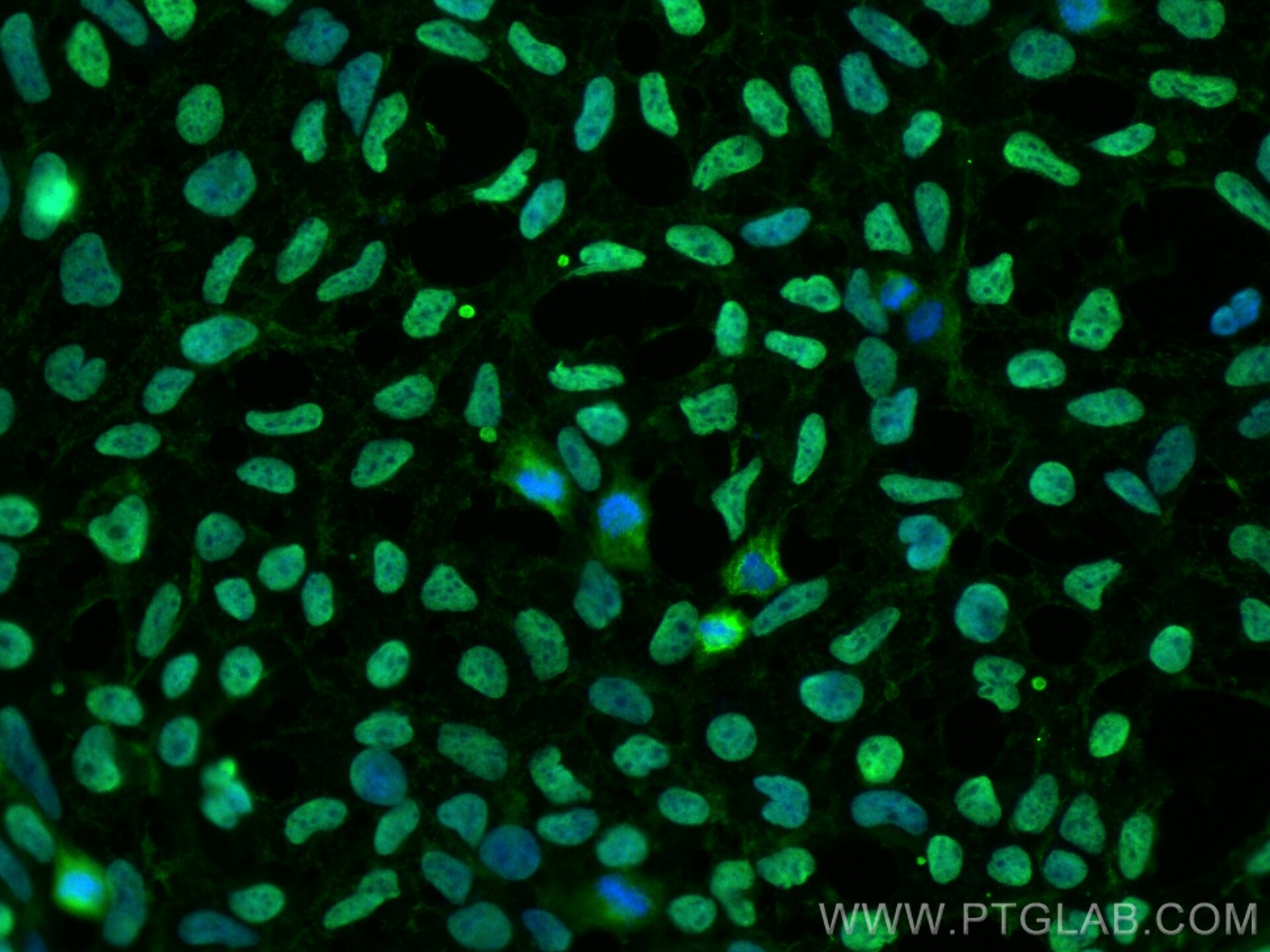Tested Applications
| Positive WB detected in | MCF-7 cells, C6 cells, L02 cells, ROS1728 cells, HEK-293 cells |
| Positive IHC detected in | mouse brain tissue, human endometrial cancer tissue, human prostate cancer tissue Note: suggested antigen retrieval with TE buffer pH 9.0; (*) Alternatively, antigen retrieval may be performed with citrate buffer pH 6.0 |
| Positive IF-P detected in | mouse embryo tissue, mouse brain tissue |
| Positive IF/ICC detected in | HEK-293 cells |
Recommended dilution
| Application | Dilution |
|---|---|
| Western Blot (WB) | WB : 1:1000-1:4000 |
| Immunohistochemistry (IHC) | IHC : 1:10-1:100 |
| Immunofluorescence (IF)-P | IF-P : 1:200-1:800 |
| Immunofluorescence (IF)/ICC | IF/ICC : 1:500-1:2000 |
| It is recommended that this reagent should be titrated in each testing system to obtain optimal results. | |
| Sample-dependent, Check data in validation data gallery. | |
Published Applications
| KD/KO | See 1 publications below |
| WB | See 4 publications below |
| IF | See 1 publications below |
| IP | See 1 publications below |
Product Information
60082-1-Ig targets DACH1 in WB, IHC, IF/ICC, IF-P, IP, ELISA applications and shows reactivity with human, mouse, rat samples.
| Tested Reactivity | human, mouse, rat |
| Cited Reactivity | human, mouse |
| Host / Isotype | Mouse / IgG1 |
| Class | Monoclonal |
| Type | Antibody |
| Immunogen |
CatNo: Ag4474 Product name: Recombinant human DACH1 protein Source: e coli.-derived, PET28a Tag: 6*His Domain: 176-521 aa of BC021219 Sequence: QHGADSENGDMNSSVGLELPFMMMPHPLIPVSLPPASVTMAMSQMNHLSTIANMAAAAQVQSPPSRVETSVIKERVPDSPSPAPSLEEGRRPGSHPSSHRSSSVSSSPARTESSSDRIPVHQNGLSMNQMLMGLSPNVLPGPKEGDLAGHDMGHESKRMHIEKDETPLSTPTARDSLDKLSLTGHGQPLPPGFPSPFLFPDGLSSIETLLTNIQGLLKVAIDNARAQEKQVQLEKTELKMDFLRERELRETLEKQLAMEQKNRAIVQKRLKKEKKAKRKLQEALEFETKRREQAEQTLKQAASTDSLRVLNDSLTPEIEADRSGGRTDAERTIQDGRLYLKTTVMY Predict reactive species |
| Full Name | dachshund homolog 1 (Drosophila) |
| Calculated Molecular Weight | 79 kDa |
| Observed Molecular Weight | 97-110 kDa |
| GenBank Accession Number | BC021219 |
| Gene Symbol | DACH1 |
| Gene ID (NCBI) | 1602 |
| RRID | AB_2089711 |
| Conjugate | Unconjugated |
| Form | Liquid |
| Purification Method | Protein G purification |
| UNIPROT ID | Q9UI36 |
| Storage Buffer | PBS with 0.02% sodium azide and 50% glycerol, pH 7.3. |
| Storage Conditions | Store at -20°C. Stable for one year after shipment. Aliquoting is unnecessary for -20oC storage. 20ul sizes contain 0.1% BSA. |
Background Information
DACH1, a homologue of the Drosophila dachshund gene, is a key regulator of cell fate determination during eye, leg, and brain development in the fly. Through interacting with NCoR and Smad4, DACH1 is able to inhibit the transforming growth factor-beta (TGF-beta) signaling pathway. DACH1 can inhibit breast cancer cellular proliferation via cyclin D1, suggesting a possible role in tumor suppression. Additionally, DACH1 plays an important role in negative regulation of RANKL (Receptor activator of NF-kappaB ligand ) gene expression in marrow stromal/preosteoblast cells. Dach1 expression is enriched in rECs, which are associated with osteoprogenitors and bone-resorbing osteoclasts, and overexpression of DACH1 in postnatal mice induces a strong increase in arteries and type R capillaries, leading to local metabolic changes and enabling trabecular bone formation in normally highly hypoxic areas of the diaphysis (PMID: 39528700). Moreover, Loss of DACH1 expression might be involved in endometrial cancer progression. Four isoforms of DACH1 are produced by alternative splicing, but isoform1(97-110kd) is the predominantly expressed form in tissue. This antibody is a mouse monoclonal antibody raised against residues near the C terminus of human DACH1.
Protocols
| Product Specific Protocols | |
|---|---|
| IF protocol for DACH1 antibody 60082-1-Ig | Download protocol |
| IHC protocol for DACH1 antibody 60082-1-Ig | Download protocol |
| WB protocol for DACH1 antibody 60082-1-Ig | Download protocol |
| Standard Protocols | |
|---|---|
| Click here to view our Standard Protocols |
Publications
| Species | Application | Title |
|---|---|---|
Am J Respir Cell Mol Biol DACH1 Attenuates Airway Inflammation in COPD by Activating NRF2 Signaling | ||
Cell Biol Int DACH1 inhibits the proliferation and migration of papillary thyroid carcinoma | ||
Front Oncol Identification and verification of the temozolomide resistance feature gene DACH1 in gliomas
| ||
Clin Exp Metastasis Lung-derived soluble factors support stemness/plasticity and metastatic behaviour of breast cancer cells via the FGF2-DACH1 axis |

